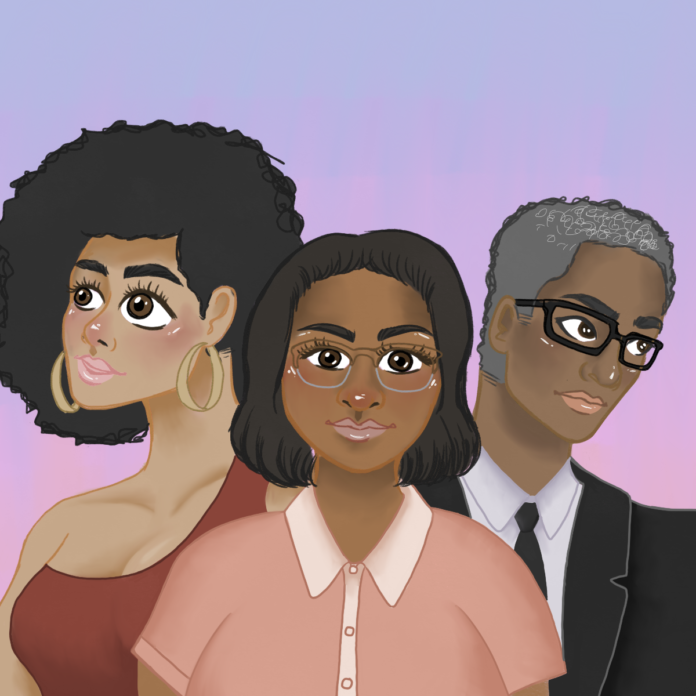Kyle Dent
Assistant News Editor
As a research university that joined the University of California (UC) system in 1944 and later expanded to the remnants of an old World War II base which occupied Chumash land, our campus has always been surrounded and entrenched in whiteness. Unsurprisingly, the first Black students had to fight tooth and nail for the administration to acknowledge them as well as Black studies as a valid discipline.
In the spring quarter of 1968, the Afro-American Student Union submitted a document to the UC system titled, “Proposal For Establishing a Black Studies Program to the University of California,” which provided a clear outline for why Black students needed a center to educate themselves on their history, and create a better future.
Gaining the knowledge to understand and end the oppression Black people face for future generations was an important element of the proposal: “Universities are the wholesale producers of a designated mentality conductive to the perpetration and continuation of America’s present national life … there is little need to detail the sad circumstances of our plight in American society.”
“We, the young, must shoulder the major portion of this burden; that we, the young, are the key link to the survival of our kind; that we must therefore call unto and surround ourselves with resources of all kind and material which will aid us in preparing for this great task. A qualitative change in our education is necessary to this end.”
The proposal also outlined classes and how many units they’d be worth, how recruitment for the major would work, and extension programs between campuses. However, UC administration all but ignored the students, accepting none of their demands. The Black student body had to turn elsewhere to make themselves heard.
About six months later, on Oct. 14, 1968, sixteen Black students held a public demonstration. At 6:30 a.m., the students quickly occupied the computer center in UC Santa Barbara’s (UCSB) North Hall. This was one of the four computer centers in America at this time, and allowed for that era’s only form of “internet” to run, as well as housing student records and the like.
As such, this was a hotspot on campus, and the Black students knew this. They planned the “high-risk” operation two weeks in advance, learning about exit routes out of the building in case of police intervention. They occupied the building for hours, refusing to leave until their demands were heard, such as the establishment of a Black students department, and appointing a Black woman within the Educational Opportunity Program.
Many Black and white students surrounded the building, with many offering supporting chants, decrying police presence, and tossing food up to those inside.
After many hours of the administration failing to satisfy the occupants, they eventually agreed to seven out of eight students demands, and the students left North Hall. A year later, the students and administration wrote “A Proposal for a Black Studies Program at UCSB,” to structure the new Black studies department on campus.
This did not spell a perfect peace for Black students, however. In October of 1969, UCSB’s Black Student Union (BSU) called for the chair of the Black studies department to step down, citing his lack of Black faculty and advisers in the department.
After statements from both parties, he stepped down, though the next chair was not highly favored either. The department also faced judgement from other disciplines on campus that felt ethnic studies were an unnecessary field, and professors who’d use their experience in the department as a resume builder to further their career.
The department dealt with constant incursions by administration and outside faculty. Five years after its inception, UCSB’s administration declared the department wasn’t researching and performing exactly as the UC would like.
The Black studies department had to demand more faculty and human resources to meet the university’s requirements, which the school barely accepted — it has never been an easy road for Black studies.
However, in 1974, Gerard Pigeon took over as chair of the Black studies department, and it grew immensely over his 26 years, with six valedictorians, over 4,000 enrolled students and ranking for top 10 for faculty research. During his tenure, he was well-loved by students and staff for participating in protests, like a hunger strike to improve ethnic studies requirements.
The department now “assumes a matrix model, bringing together scholars from an array of disciplines concerned with the Black Diaspora (the United States and Caribbean), as well as Africa,” to encourage a holistic view of Blackness.
Now, the department is considered ninth in the nation, and led to the development of other ethnic studies programs as well as gender studies at UCSB and within our country as a whole. Throughout the generations, our Black studies program has made their message clear: they will be heard, and they will get what they deserve.

















